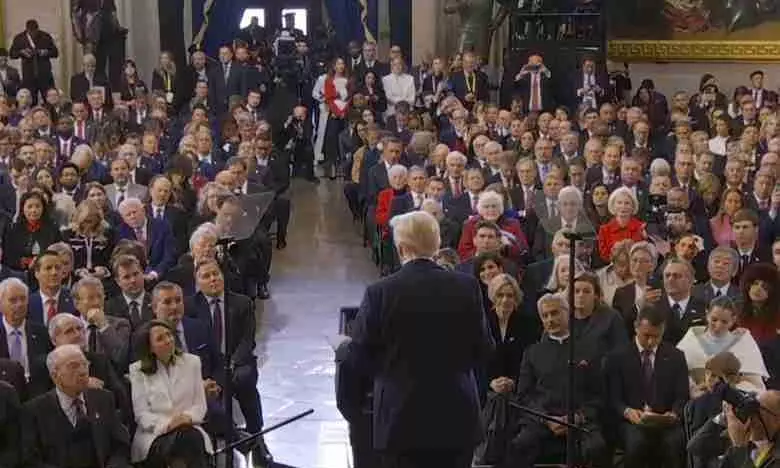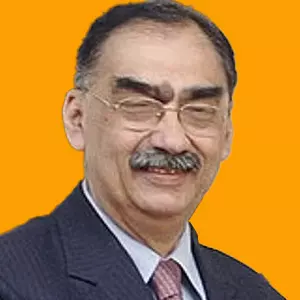
- Home
- India
- World
- Premium
- THE FEDERAL SPECIAL
- Analysis
- States
- Perspective
- Videos
- Sports
- Education
- Entertainment
- Elections
- Features
- Health
- Business
- Series
- In memoriam: Sheikh Mujibur Rahman
- Bishnoi's Men
- NEET TANGLE
- Economy Series
- Earth Day
- Kashmir’s Frozen Turbulence
- India@75
- The legend of Ramjanmabhoomi
- Liberalisation@30
- How to tame a dragon
- Celebrating biodiversity
- Farm Matters
- 50 days of solitude
- Bringing Migrants Home
- Budget 2020
- Jharkhand Votes
- The Federal Investigates
- The Federal Impact
- Vanishing Sand
- Gandhi @ 150
- Andhra Today
- Field report
- Operation Gulmarg
- Pandemic @1 Mn in India
- The Federal Year-End
- The Zero Year
- Science
- Brand studio
- Newsletter
- Elections 2024
- Events
- Home
- IndiaIndia
- World
- Analysis
- StatesStates
- PerspectivePerspective
- VideosVideos
- Sports
- Education
- Entertainment
- ElectionsElections
- Features
- Health
- BusinessBusiness
- Premium
- Loading...
Premium - Events

Is it a mere diplomatic technicality that doesn't matter in inter-state ties? The answer is 'no' because it involves the reputation of the country and its EAM
By all accounts, especially his own, External Affairs Minister S Jaishankar’s visit to Washington to attend Donald Trump’s oath-taking ceremony as the US President on January 20 was successful.
He was given a place of prominence during the ceremony. He met incoming Secretary of State Marco Rubio bilaterally and also at a QUAD foreign ministers’ meeting.
He was successful in meeting other members of the incoming Trump administration, too. They all affirmed their interest in continuing to strengthen the bilateral relationship though there are problems in the trade and migration area and it will need skill in Delhi and Washington to navigate them.
It also seems that Jaishankar was able to make headway in ensuring that PrimeMinister Narendra Modi would be able to go to Washington in February to meet Trump though no official announcement has been made on this yet.
A point of confusion
Amid all the details of the visit, there is one question on which there is confusion: In what capacity did Jaishankar visit Washington for Trump’s oath-taking ceremony? At a press conference he addressed in Washington on January 22, Jaishankar himself said, “So, as you all know, I am here as Special Envoy of the Prime Minister (SEPM) for the inauguration of President Trump and Vice President Vance.”
Earlier, news agency ANI reported at 12.46 am on January 21 that Jaishankar had tweeted, “A great honour to represent India at the inauguration ceremony of US President Donald Trump and Vice President JD Vance in Washington DC today.”
It seems that at least at the time he had tweeted, Jaishankar was using the formulation which was in keeping with the Ministry of External Affairs’ (MEA’s) announcement of his visit to Washington.
On January 12, in a media release, the MEA stated: “On the invitation of the Trump-Vance Inaugural Committee, External Affairs Minister Dr S Jaishankar will represent the Government of India at the Swearing-In Ceremony of President-Elect Donald J Trump as the 47th President of the United States of America. During the visit, EAM will also have meetings with representatives of the incoming Administration, as also some other dignitaries visiting the US on that occasion.”
Also read: After ‘long talk’, Trump says Modi likely to visit White House in February
No official address as SEPM
It is also noteworthy that Indian Ambassador to the US, Vinay Kwatra, while inviting Jaishankar to address the media conference on January 22, did not use the term “Special Envoy of the Prime Minister”. Kwatra said, “It’s a great pleasure for us to have honourable External Affairs Minister of India, Dr S Jaishankar, amongst us for this brief press interaction. We will start with the EAM making brief opening remarks.”
In his concluding sentence at the media conference, too, Kwatra did not mention that Jaishankar was in Washington as SEPM. He used a generic reference: “Thank you very much, Sir. This brings to a close this morning’s special briefing.”
It is said that Jaishankar was “SEPM” because he carried a letter from Modi for Trump. As any diplomat knows, an EAM can carry a communication for the leader of a country he is visiting, but that does not make him a SEPM.
Besides, no prominence has been given in the media to the letter; nor to whom Jaishankar delivered it. If the hope was that by carrying a letter, he would get a few minutes with Trump or even Vance, then obviously, that hope did not materialise.
It is, therefore, confusing and intriguing that Jaishankar should have projected himself as the SEPM of Modi. At this stage, it would be useful to examine how and in what contexts SEPMs are appointed.
Also read | Quad’s future uncertain as key allies India, US mend fences with China
Categories of SEPMs
SEPMs can be of two broad categories. The first is where SEPMs are appointed by the Head of a Government/State on a long-term basis to represent a country on a specific international issue, a country or a region.
In India, in the past, a SEPM was appointed for Afghanistan — late distinguished ambassador SK Lambah. In that capacity, he attended international and regional meetings where the Afghanistan situation was discussed.
Former Foreign Secretary Shyam Saran was appointed SEPM for Climate Change. In that position, he participated in international conferences on climate change and also advised the prime minister on issues relating to climate change.
Rakesh Sood, who served as India’s ambassador to France and is an acknowledged authority on nuclear disarmament issues, was appointed as SEPM for Disarmament and Non-Proliferation. All these appointments were made during the late Prime Minister Manmohan Singh’s time. Such appointments are made suo motu by a government.
Also read: 'Modi will do what’s right': Trump on return of illegal Indian immigrants
The second category
The second is where a distinguished person — a minister, a official or even a non-official — is sent to an event where a Head of Government/State is invited by a country or leader and she/he cannot go and sends a Special Representative or Envoy. The media reported that Trump invited Chinese President Xi Jinping to his oath-taking ceremony but he deputed Vice-President Han Zheng in his place.
Though it is not known if Han was designated Special Envoy of the Chinese President, media reports indicate that Han met Vance a day prior to the Trump-Vance inauguration.
The essential aspect in such a case is that there is an invitation to the President/Prime Minister. There have been no reports that there was an invitation to Modi. Hence, it is confusing as to how Jaishankar designated himself as his SEPM.
Need for clarification
The text of the invitation from the Trump-Vance Inauguration Committee has not been disclosed. It is, therefore, not known if it was addressed to Jaishankar by name in his capacity as EAM or if it was to the Government of India to send a representative.
Normally, if an invitation is addressed to the government to send a representative, the prime minister does not directly accept it. It is, however, open to him to send someone as his SEPM.
Watch | Can Trump implement all he has promised? | Panel Discussion
If that was the case, why was that not indicated in the press release on January 12 or any time before the inauguration ceremony?
Are all these merely diplomatic technicalities and, therefore, do not matter in inter-state relations? The answer is “no” because they involve the reputation of the country and its external affairs minister.
It would, therefore, be wise for the government to clarify the issue at the earliest. This is especially because it is unusual for an EAM to announce himself as SEPM when no one else did and nor was there any official announcement to this effect.
(The Federal seeks to present views and opinions from all sides of the spectrum. The information, ideas or opinions in the articles are of the author and do not necessarily reflect the views of The Federal.)


